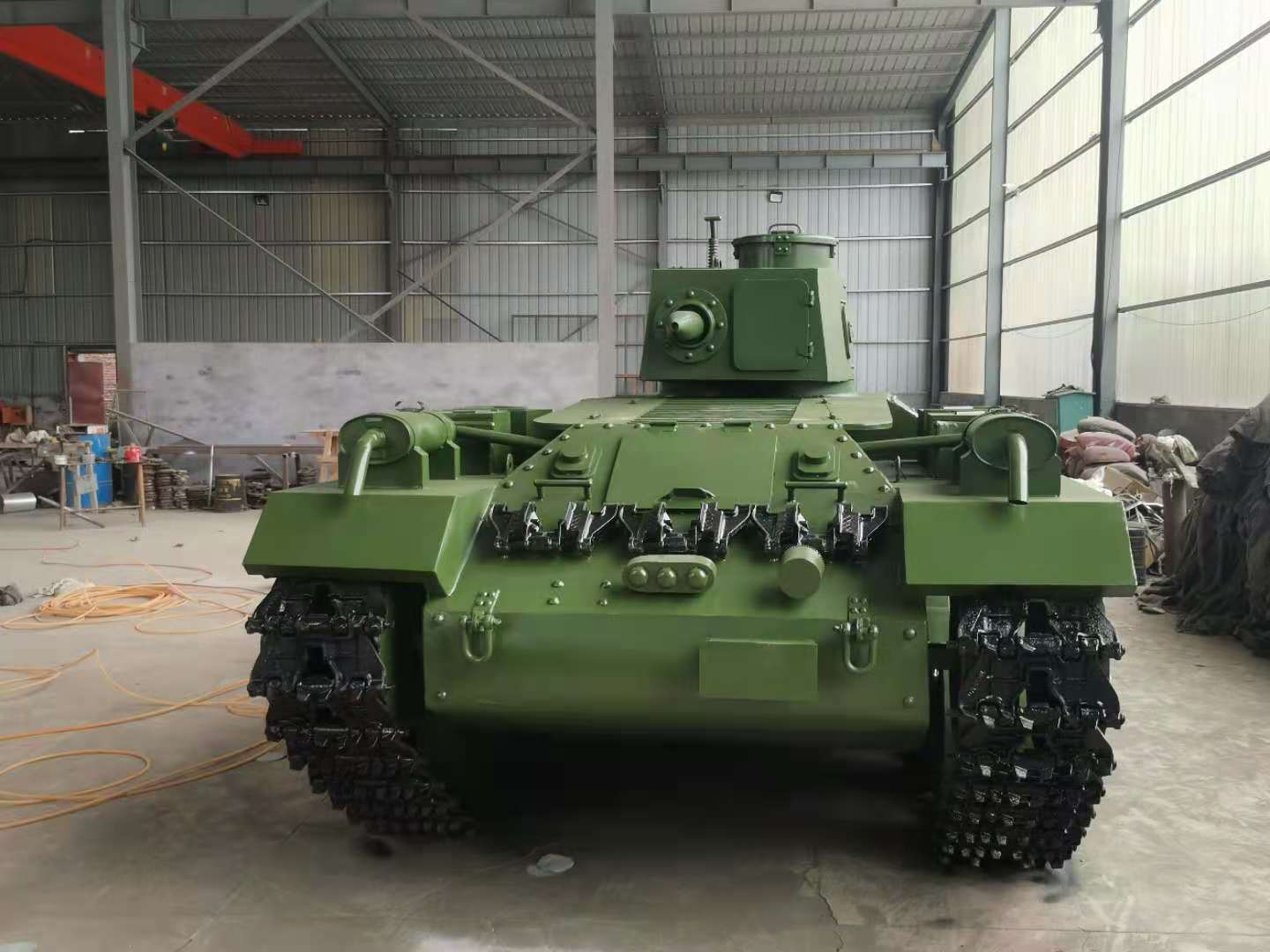軍事模型-設計思路和實現步驟
發布時間:2024-08-15 來源:http://m.hnecatgd.com/
它們不僅僅是簡單的靜態展示物,更像是復制原有軍事裝備和場景的微縮物品,具備高度的仿真度。
They are not just simple static displays, but more like miniature items that replicate existing military equipment and scenes, with a high degree of simulation.
本文將從設計思路和實現步驟兩個方面來探討軍事模型的制作過程。
This article will explore the production process of military models from two aspects: design ideas and implementation steps.
一、設計思路軍事模型的設計思路是制作一個盡可能真實的軍事場景,觸發人們對軍事的思考和研究興趣。
1、 The design concept of military models is to create a military scenario that is as realistic as possible, triggering people's thinking and research interest in military affairs.
設計思路可以包括以下幾個方面:
The design concept can include the following aspects:
1.主題選擇:
1. Theme selection:
首先,根據個人喜好或市場需求選擇一個明確的主題,如二戰、現代戰爭、科幻戰爭等。
Firstly, choose a clear theme based on personal preferences or market demand, such as World War II, modern warfare, science fiction warfare, etc.
主題的選擇將決定后續的模型設計和制作方向。
The choice of theme will determine the direction of subsequent model design and production.
2.核心元素確定:
2. Determination of core elements:
根據主題,確定構成軍事場景的核心元素,如戰車、士兵、飛機等。
Based on the theme, determine the core elements that make up the military scene, such as tanks, soldiers, airplanes, etc.
這些元素應當具有代表性和可辨識度,能夠準確地表達出所展示的軍事主題。
These elements should be representative and recognizable, accurately expressing the military theme being presented.
3.布局效果:
3. Layout effect:
根據核心元素,進行場景的布局設計。
Design the layout of the scene based on the core elements.
模型的布局應該符合場景的真實性和邏輯性,遵循軍事戰場的規則和特點,使觀眾能夠產生身臨其境的感覺。
The layout of the model should conform to the authenticity and logic of the scene, follow the rules and characteristics of the military battlefield, and enable the audience to have a sense of immersion.
4.素材選擇:
4. Material selection:
根據模型的尺寸和設計要求,選擇適合的材料進行制作。
Select suitable materials for production based on the size and design requirements of the model.
常用的材料包括塑料、金屬、木材等。
Common materials include plastic, metal, wood, etc.
素材的選擇應考慮模型的穩定性、細節表現和可塑性。
The selection of materials should consider the stability, detail representation, and plasticity of the model.
二、實現步驟制作軍事模型需要一系列的工序和步驟,下面將介紹一種常見的實現步驟:
2、 To create a military model, a series of processes and steps are required. The following will introduce a common implementation step:
1.收集資料:
1. Collect data:
首先,收集與模型主題相關的資料,如圖片、視頻和文獻等。
Firstly, collect materials related to the model theme, such as images, videos, and literature.
通過對資料的研究,可以加深對軍事裝備和場景的理解,為模型的制作提供參考和依據。
By studying the data, we can deepen our understanding of military equipment and scenarios, providing reference and basis for the production of models.
2.制定計劃:
2. Develop a plan:
在了解資料的基礎上,制定制作計劃。
Based on understanding the information, develop a production plan.
計劃包括制作時間、材料和工具的準備,以及具體的制作步驟。
The plan includes preparation of production time, materials and tools, as well as specific production steps.
制定計劃可以更好地組織制作過程,提高效率。
Developing a plan can better organize the production process and improve efficiency.
3.制作主體結構:
3. Creating the main structure:
根據所選擇的材料,制作模型的主體結構。
Based on the selected material, create the main structure of the model.

例如,使用塑料材料制作戰車的車身和履帶,使用金屬材料制作士兵的槍械和裝備。
For example, using plastic materials to make the body and tracks of tanks, and using metal materials to make soldiers' firearms and equipment.
制作主體結構時要注意尺寸的準確性和模型的穩定性。
When making the main structure, attention should be paid to the accuracy of dimensions and the stability of the model.
4.添加細節和裝飾:
4. Add details and decorations:
在主體結構制作完成后,可以根據資料中的細節信息,添加模型的細節和裝飾。
After the completion of the main structure production, details and decorations of the model can be added based on the detailed information in the materials.
例如,使用細小的零件模擬戰車的細節構造,使用涂裝和貼紙模擬士兵的服裝和標志。
For example, using small parts to simulate the detailed construction of tanks, and using paint and stickers to simulate soldiers' clothing and logos.
5.進行涂裝和上光:
5. Painting and polishing:
在完成細節和裝飾后,進行模型的涂裝和上光處理。
After completing the details and decorations, paint and polish the model.
涂裝應準確地還原原型的顏色和紋理,上光可以增加模型的光澤和真實感。
Painting should accurately restore the color and texture of the prototype, and polishing can increase the gloss and realism of the model.
6.進行場景布置:
6. Set up the scene:
最后,根據場景的設計,將制作好的模型放置在合適的位置,并添加一些小道具和背景,使場景更具層次感和真實感。
Finally, according to the design of the scene, place the made model in the appropriate position and add some props and backgrounds to make the scene more layered and realistic.